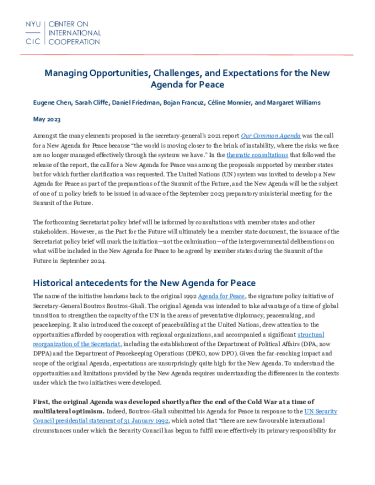Amongst the many elements proposed in the secretary-general’s 2021 report Our Common Agenda was the call for a New Agenda for Peace because “the world is moving closer to the brink of instability, where the risks we face are no longer managed effectively through the systems we have.”
The United Nations (UN) system was invited to develop a New Agenda for Peace as part of the preparations of the Summit of the Future, and the New Agenda will be the subject of one of 11 policy briefs to be issued in advance of the September 2023 preparatory ministerial meeting for the Summit of the Future.
The forthcoming Secretariat policy brief will be informed by consultations with member states and other stakeholders. However, as the Pact for the Future will ultimately be a member state document, the issuance of the Secretariat policy brief will mark the initiation—not the culmination—of the intergovernmental deliberations on what will be included in the New Agenda for Peace to be agreed by member states during the Summit of the Future in September 2024.
This piece provides a historical glance at past UN reforms, identifies the primary challenges and opportunities the UN and its member states face as they undergo this process, and looks forward to the key priorities that can be taken up from a realistic and practical perspective. Highlighted is how the New Agenda for Peace “provides a rare opportunity for the United Nations to examine and reflect upon the totality of the peace and security work of the Organization to uncover and better understand the synergies and contradictions of the existing processes and structures.”
